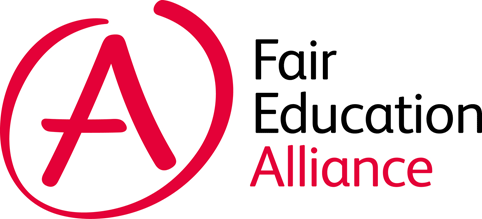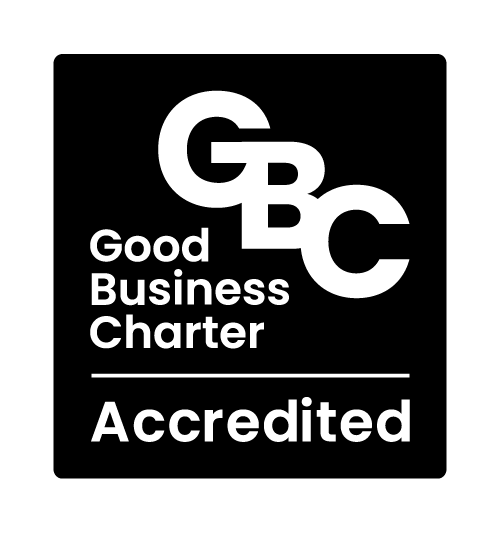My top tips and strategies for teaching the Middle East at GCSE
If you’re reading this then you’re already aware of some of the benefits and challenges of teaching the Middle East, so I’ll be skipping past the ‘why it’s a good idea’ and get to the ‘how you can do it successfully’ part of the question. The key to success, in our experience, is to adopt a dual narrative approach to the whole topic (Jews/Arabs, Israel/Palestine) and to integrate Parallel Histories educational resources into our GCSE course teaching.
As the summer comes to an end and I was limbering up to teach this great topic again I thought it might save others some time if I explained how we do this and shared some tips and strategies.
We integrate the Parallel Histories approach into GCSE because:

It’s fun and post lockdown my students need reinvigorating
The PARALLEL HISTORIES approach provides a safe and exciting way for students to navigate controversy and the buzz they gain from collaborating to argue their position is something that many have been starved of over the past 18 months. It also insulates teachers from accusations of bias.
It’s simple and very effective: “Write less, think more, write better”
If – like me – you’ve sometimes been tempted into “covering’ rather than really exploring GCSE topics because of the sheer volume of material, then integrating PARALLEL HISTORIES into what you already do could be a good move. At first glance it might look like you are having to deliver more material – two narrative rather than just one, but in practice it takes no longer, and the students will have a much better understanding of the intractable nature of the conflict. In short, we’ve found that when students have debated a topic before they write, they’re better able to formulate ideas and they communicate them more precisely. This is especially the case on controversial “live’ topics such as the Middle East.
It makes up for the absence of source questions on the Middle East paper
When thinking about the journey our students take from KS3 through to KS5, it helps them if we use a source-based approach to build historical thinking consistently across the whole course. I understand why the exam boards have some ‘non source’ question papers but that shouldn’t govern how we teach. And PARALLEL HISTORIES provides hundreds of excellent free sources in packs sorted by difficulty (the first three in every pack of ten are more pictorial and accessible, the next three are more difficult, often containing more text, more complex ideas and more nuance in terms of provenance, and the remaining four are medium hard) You can register to create an account and access these here
It generates opportunities for historical debating in class
Evidence-led debate, which is what PARALLEL HISTORIES is all about, generates deeper knowledge because students explore how the conflicting perspectives have been formed as well as the perspectives themselves. This works better for us than a difficult attempt to balance contradictory views within a single narrative. For the debates, I review the packs of sources that PARALLEL HISTORIES provide to pick out a selection which I think are appropriate for my class. Pre-Covid I used to print and laminate the sources for group work and debate in class, but it also worked well online during lockdown. We’re aiming to run three or four debates across the scheme of work. We also debate with other schools which is a fantastic way to get students doing their own research and accelerate their learning and the PARALLEL HISTORIES team coordinates and runs the debates. If you are still curious about this there’s a very good blog article here by Shellie Webster who teaches history at Christ the King on the Isle of Wight
TOP TIPS AND STRATEGIES
1. Getting started
There is so much for our students to gain here in terms of cultural capacity and knowledge. Some students will already have some knowledge of this history, and very likely, a strong view of what is right, whereas other students will have little knowledge of the conflict or even where the Middle East is. Both groups will gain, but in particular giving those who come to the topic with firm views an insight into an alternative view is an important step in them learning about multiple perspectives. For a synoptic overview of not just the whole course but way further back to the origins of the conflict right through to the Mandate, I start by asking students to review the PARALLEL HISTORIES video ‘Complete History’ . Sometimes I divide the class and each half watches a different narrative which creates discussion and debate in the next lesson. We follow that with summarising ‘What divides Jews and Arabs?’ at the start of the course. Then I ask the students to create a timeline which they fill in as they go along ‘graphing’ the rise and fall of tension between the two sides.
2. Keep things simple…go dual narrative!
A dual narrative approach is part of our ‘tool kit” as this structure gives students a solid grasp of what divides the Arab and Jewish camps.
We record views from each perspective as we move through each episode, and this cements student understanding. By the time we’ve explored Key Topic 1: The birth of the state of Israel, 1945–63 and Key topic 2: The escalating conflict, 1964–73, students can think in terms of a spectrum of viewpoints within each perspective. This helps them grasp the impact of different factors e.g. the rise of religious conservatism, formation of Hamas etc and the impact on negotiations this then had. This opens the door to understanding Key topic 3: Attempts at a solution, 1974–95 and prepares for the exam questions without obsessing with the test.
3. Use questions that the class can keep coming back to as you steer them through the topic
(Integrating the PARALLEL HISTORIES dual narrative approach as a review tool)
Revisiting questions that tie understanding together at various points in the course helps students develop a sense of change and continuity over time and helps them build and connect their knowledge chronologically. Here are a few examples:
– What divided Jews and Arabs? Ask this question after each Key topic as a review tool, prompting them to respond along agreed themes e.g. Land, Religion, Population, Water, Allies. I use a chart which we fill in over time. This builds a sense of familiarity and sequence and opens up discussion of continuity and change and consequence over time (helpful for question 1 about consequences)
– Why were Jews and Arabs unable to resolve their differences? Ask this question at points of conflict because it requires analysis of causes and encourages them to explore the interplay between the different stakeholders (helpful for question 2 which requires a narrative account exhibiting an understanding of ‘features and characteristics’)
– Who called the shots? Ask this question at any time in terms of encouraging them to evaluate who was influencing what and by how much (helpful for question 2 which requires a narrative account exhibiting an understanding of ‘features and characteristics’)
– Why were the USA and USSR, or any other of the outside powers so interested in the Middle East? This is a more pointed version of the question above (helpful for question 3 which asks candidates to explain the importance of x for y)
4. Keep the momentum going within each topic with “Inquiry Questions” and class debates
Using controversial questions to investigate an element of the topic gives the class a focus to get their teeth into and an opportunity to apply their knowledge whether gained from teacher presentation, their own research or PARALLEL HISTORIES materials. (The PARALLEL HISTORIES materials are free, but you’ll have to register to access the videos and download source packs)

5. How does the above help with the exam?
PARALLEL HISTORIES debates help students rehearse the relationship between events to evaluate and to explain succinctly but here are a few other pointers on how the approach I’ve described helps students:
Question 1) Explain two consequences of e.g. the British withdrawal from Palestine in 1947 (8 marks)
– A direct and simple way to answer this is to give one consequence for Arabs, one consequence for Jews using the dual narrative approach which underpins the whole historical inquiry
– Asking the class to create ‘Talking timelines/living graphs’ after each section of the specification to record the sequence of events and consequences experienced by different groups.
Question 2) Write a narrative account analysing the key events in the years 1945-48 that led to the creation of Israel (8 marks)
– A narrative account entails both the ‘story’ but also (and weaker students may struggle with this) an analysis of the causal relationship between events from ’45 to ’48 and the timeline graphing tension over time will help with this.
– Additionally, a perspective-based approach will automatically have prepared students to explain how an event will have caused different outcomes in different groups and this will help their answers show ‘good knowledge and understanding of the required features or characteristics of the period’
Question 3) Explain the importance of x for y, e.g. the importance of the oil embargo for international attitudes towards the Middle East conflict. (16 marks)
-The PARALLEL HISTORIES approach is particularly relevant to answering this question well, as the focus is on the impact of an event on one particular group or individual and understood from their perspective. A candidate would be penalised for an answer which becomes too general in terms of ‘importance to’.
– Additionally, class debates allow students to articulate and defend the importance of different causal factors, and by making this an oral rather than written exercise you can get your class to rehearse and test more arguments.
6. Sign up for free PARALLEL HISTORIES training
There are free one-hour CPD online events after school on most Mondays. Group size is limited to usually no more than six so there’s plenty of opportunity to share experiences with other teachers who may come from very different schools and sometimes other countries. You can sign up here.
7. Use the Hodder and Pearson resources
The recent withdrawal of some textbooks because of accusations of bias from both pro-Israeli and pro-Palestinian groups could be a problem if you don’t already have copies, but the online version still works if you’ve subscribed to Pearson Active Learn
– However, this also provides a teaching opportunity, perhaps an extension task for students to explore what ‘bias’ means and learn about how history teaching in secondary schools can become a matter of public interest. There’s a link to an article in The Guardian which explains the controversy and provides further links to other material.
-The Pearson teaching guide includes a comprehensive list of useful resources and is clear on what students need to know and understand.
– If you would like your students to have a presentation from some Israeli and Palestinian speakers then contact ‘Solutions Not Sides’.
8. Share your questions and experiences, triumphs and disasters, with other teachers
There’s a private Facebook group for teachers using PARALLEL HISTORIES materials to teach Israel and Palestine, and also other controversial historical topics like the Sunni and Shi’a conflict and the history of The Troubles in Northern Ireland which you can join here
9. Consider using the PARALLEL HISTORIES approach at KS3
It’s a good idea if you can, to use Parallel Histories resources at Y9. It’s a topic that most students really get into, even if they are not planning to continue with history, because it is a live controversy. They enjoy the evidence-led approach that puts them in charge of forming their own opinions and they’ll benefit in terms of cultural capacity from the challenges to their own preconceptions. You can avoid repetition of content by focusing on the conflict up to 1945 when the Pearson GCSE syllabus starts. When students reconnect to the Middle East at KS4 their background knowledge of the longer history of the Middle East up to Balfour and the Mandate gives them a reassuring platform, and they’ll already have some of the key knowledge/concepts and geographical and religious awareness under their belts (Empire, WW1, League of Nations, Mandate, Zionism, Arab nationalism, importance of Jerusalem to Christians, Muslims and Jews, persecution of Jews in Russia and then Germany)
If you’d like to chat directly then please email me on hugh@parallelhistories.org.ukor hcastle@lrgs.org.uk
If you have questions about accessing the PARALLEL HISTORIES resources email Sarah Gillen at sarah@parallelhistories.org.uk She has also taught this Pearson course.
Best of luck!
Hugh Castle has been Head of History at Lancaster Royal Grammar School, a selective state school in the north west of England for twenty years.
He is Chair of Trustees of Parallel Histories and has taught the Pearson Edexcel GCSE course Conflict in the Middle East, 1945–95 for ten years.






